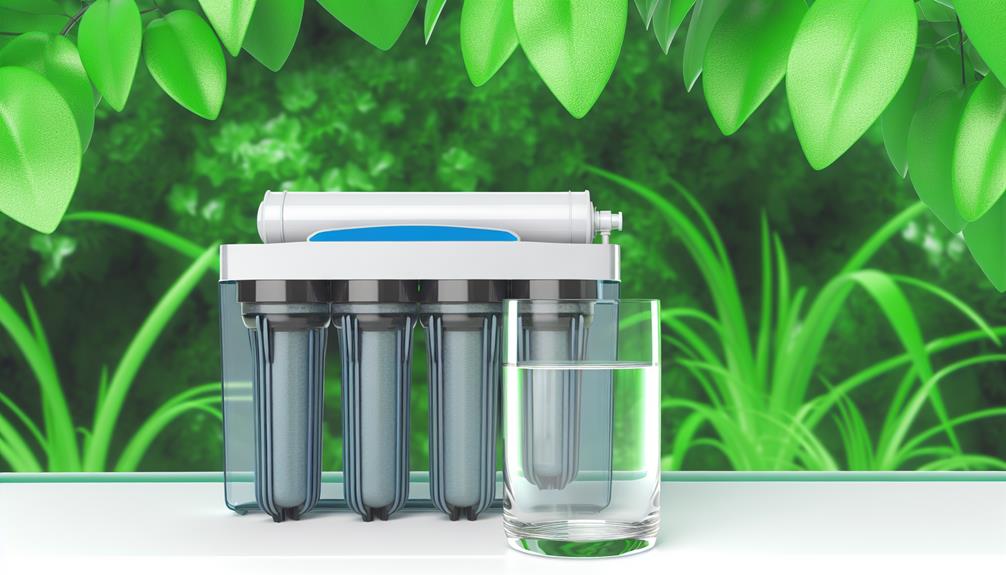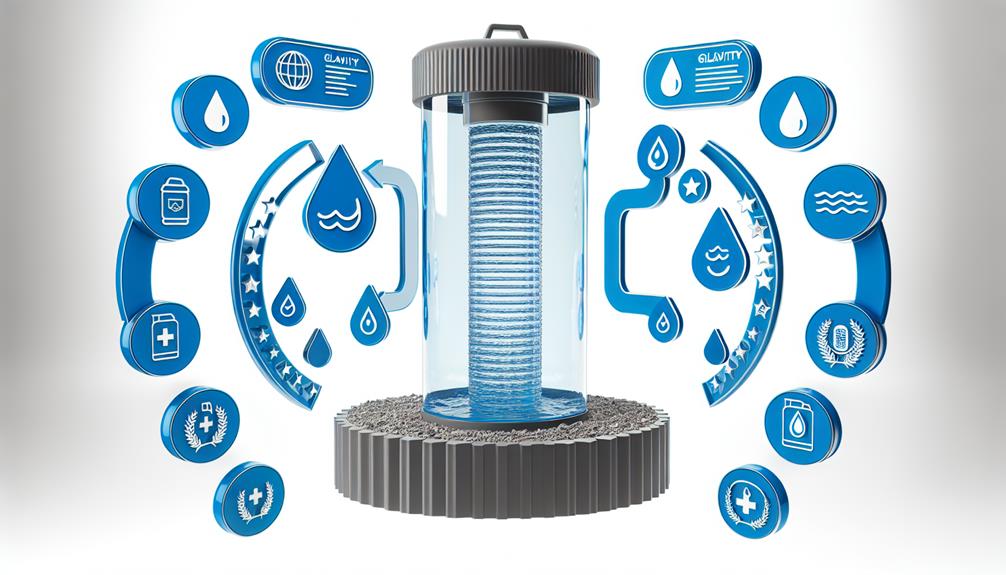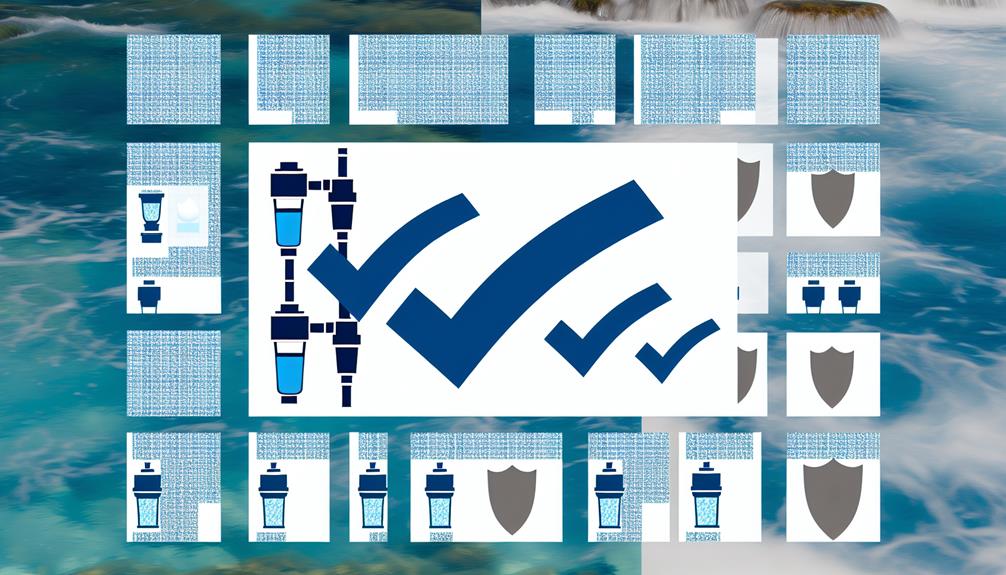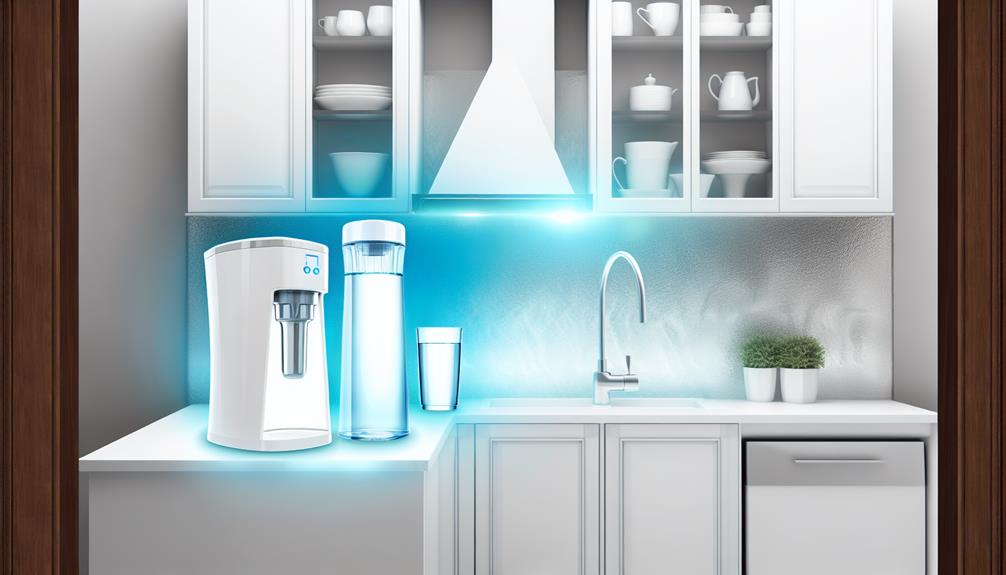Imagine your body as a high-stakes filtration system, where what you pour into it can tip the balance between health and disease. You're constantly bombarded with information about contaminants in your drinking water, but it's the tools at your disposal—the water filters—that can turn the tide in favor of purity.
You've likely heard about reverse osmosis and activated carbon filters, but the nuances of their performance and compliance with health standards aren't always crystal clear. As you seek to equip your home with a guardian against impurities, understanding the technology and effectiveness behind the 6 best water filters on the market is crucial.
With each option offering its own blend of innovative features and trusted processes, you stand at the precipice of a decision that could redefine the quality of every drop you consume. Join us as we unveil these contenders, and discover which system has the fortitude to defend your well-being against the unseen assailants lurking in your water.
Reverse Osmosis Filtration Excellence

Reverse osmosis filtration systems excel in purifying water by removing contaminants to levels that meet or exceed stringent health standards. The process hinges on a semi-permeable membrane, which is pivotal in determining both the efficacy of contaminant removal and the membrane longevity. You'll find that with proper maintenance, the lifespan of this membrane can extend significantly, ensuring consistent performance over time.
However, it's not just about impurity extraction; water taste is also a critical consideration. Reverse osmosis systems are adept at reducing the presence of dissolved salts and minerals that can affect the flavor profile of your water. They strip away the compounds responsible for hardness, such as calcium and magnesium, as well as other taste-altering substances like chlorine and sulfates. The result isn't only cleaner but also fresher-tasting water.
Analyzing membrane longevity involves understanding the factors that can compromise its integrity. These include the chemical composition of the feedwater, the frequency of filter changes, and the operational parameters of the system itself. Technical advancements in membrane development aim to enhance tolerance to these variables, thus improving longevity. By ensuring the membrane's durability and effectiveness, reverse osmosis systems maintain their role as a leading solution for achieving high-quality water that satisfies both health standards and discerning palates.
Activated Carbon Filter Effectiveness
Activated carbon filters excel at trapping organic compounds and chlorine, significantly improving both the safety and taste of your drinking water. These filters operate through adsorption, where contaminant molecules are attracted to and held on the surface of the carbon particles. It's not just about capturing impurities; the effectiveness of activated carbon lies in its extensive porous surface area, which provides a vast bed for adsorption to occur.
You'll find that chlorine reduction is a standout feature of activated carbon filters. Chlorine, commonly used for disinfection by municipal water facilities, can impart an unpleasant taste and odor. Activated carbon effectively removes chlorine, along with its by-products, thus enhancing the palatability of the water without compromising its microbiological safety.
The longevity and performance of activated carbon filters are influenced by carbon regeneration—a process that restores the adsorptive capacity of the carbon. Regeneration involves either replacing the carbon media or, in some advanced systems, cleaning it through a series of backwashing and heating cycles.
Distillation Systems Compliance

While activated carbon filters are adept at reducing chemical contaminants, distillation systems provide a different level of compliance by rigorously purifying water through the process of heating, vaporization, and condensation. This method effectively removes a vast array of pollutants, including bacteria, viruses, heavy metals, and organic compounds.
You must consider material longevity and system maintenance to ensure ongoing compliance with health standards. The components of a distillation system are typically constructed from high-grade materials such as stainless steel or glass, which resist corrosion and withstand the high temperatures involved in the distillation process. This durability is crucial, as it directly influences the system's ability to consistently produce clean water over time.
Regular system maintenance is another pivotal aspect of sustaining compliance. You're responsible for routinely cleaning the boiling chamber, condensing coils, and storage tanks to prevent mineral scale buildup and contamination. Moreover, vigilance in replacing any worn or damaged parts is essential to maintain the system's integrity and performance.
UV Purification Advancements
Advancements in UV purification technology have enhanced the efficacy of this method in eliminating microorganisms from water, ensuring a higher standard of health safety. You'll find that modern UV systems boast increased sterilization efficiency, thanks to improved light penetration and optimized wavelength frequencies. These enhancements are crucial because they directly affect the DNA of pathogens, effectively neutralizing their ability to reproduce and cause illness.
Delving deeper, you'll notice that contemporary UV units are designed to maximize contact time with water, ensuring comprehensive exposure to the germicidal radiation. This meticulous attention to the exposure dynamics significantly uplifts the sterilization success rate.
When evaluating maintenance requirements, it's evident that the latest UV filtration models offer streamlined maintenance protocols, reducing the time and effort you'll spend on upkeep. The introduction of smart sensors and self-cleaning mechanisms has been transformative, cutting down on manual interventions and ensuring consistent performance. These innovations not only boost the user experience but also reinforce the reliability of the system over extended periods of use.
Gravity-Based Filter Reliability

In assessing the reliability of gravity-based water filters, it's essential to consider their robust design, which allows for effective sediment and pathogen removal without reliance on external power sources. These systems capitalize on the natural force of gravity, channeling water through a series of filters to purify it. Their reliability stems not just from simplicity but also from the minimal moving parts involved, which significantly reduces the potential for mechanical failure.
When you examine maintenance ease, gravity-based filters score highly. They're typically straightforward to disassemble and clean, requiring no specialized tools or expertise. This user-friendly maintenance ensures that filter integrity is preserved and that performance remains consistent over time. Moreover, the maintenance frequency is often less demanding compared to other filtration systems, contributing to their overall reliability.
Discussing filter lifespan, gravity-based units are designed for longevity. The lifespan of a filter element within these systems is a critical metric, often ranging into thousands of gallons before requiring replacement. This prolonged efficacy is a testament to their durability and a key indicator of their reliability. Consequently, when you choose a gravity-based filter, you're investing in a solution that promises sustained water purification performance aligned with health standards.
Ceramic Filter Innovations
You must consider the impact of advanced ceramic materials when assessing modern water filtration systems.
These innovations have significantly improved contaminant removal, surpassing previous health standard benchmarks.
Your understanding of these developments is crucial for evaluating their role in ensuring water safety.
Advanced Ceramic Materials
Ceramic filter innovations leverage cutting-edge materials science to enhance water purification systems, ensuring safer drinking water that meets stringent health standards. You'll notice that these filters capitalize on ceramic durability and porosity control, two vital factors in water purification. By carefully engineering the pore size and distribution within the ceramic material, manufacturers can target specific contaminants, achieving a balance between flow rate and filtration efficiency.
| Feature | Benefit |
|---|---|
| Controlled porosity | Optimized filtration of contaminants |
| Enhanced durability | Longer lifespan, reduced replacement |
| Material purity | Minimizes leaching, ensures water quality |
| Innovative design | Improved flow rates and contaminant removal |
In your search for a water filter, prioritize systems that embrace these advanced ceramic materials—your health may depend on their superior capabilities.
Enhanced Contaminant Removal
Harnessing advanced ceramics, modern water filters have significantly improved their ability to remove a wide range of contaminants, including pathogens, heavy metals, and organic compounds. These filters utilize a sophisticated pore structure that can block physical impurities while facilitating chemical adsorption. This dual-action approach ensures that even minute chemical contaminants are effectively immobilized, enhancing the purity of the water.
The technical prowess of ceramic filters is evident in their extended filter lifespan, which is a direct result of the durable nature of ceramic materials combined with their inherent resistance to bacterial growth. You'll find that maintaining these systems is more cost-effective over time, as the need for frequent replacement is markedly reduced.
Conclusion
In conclusion, you've explored six water filtration technologies that not only meet but exceed health standards.
Reverse osmosis systems offer unparalleled purification, while activated carbon filters effectively remove contaminants.
Distillation units ensure compliance with stringent quality measures. UV purification stands out with its cutting-edge germicidal capabilities.
Gravity-based filters maintain consistent reliability, and ceramic filters continue to evolve with innovative designs.
Each system presents a robust solution for ensuring your water is safe and healthy, reflecting significant advancements in filtration technology.

